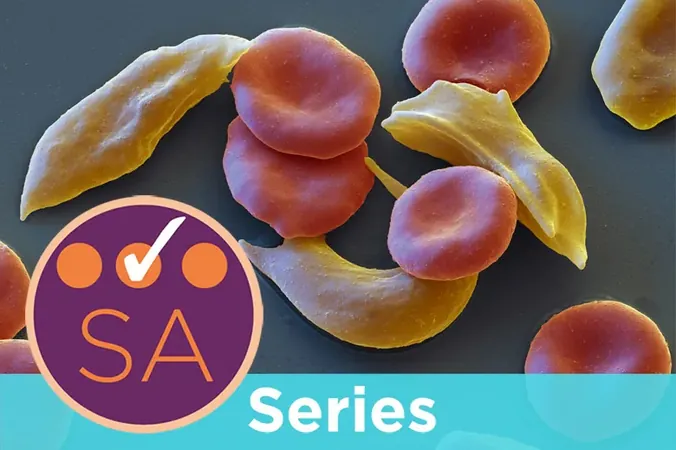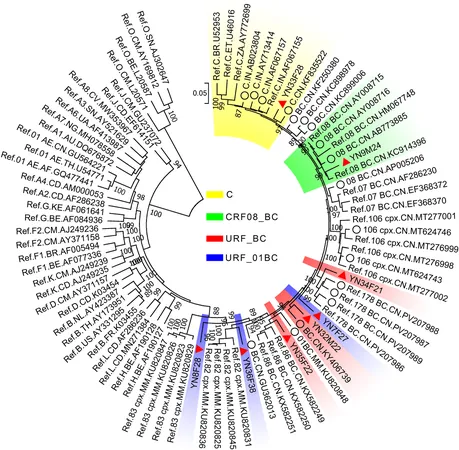
Unlocking the Secrets of Sickle Cell Disease and Beta Thalassaemia
2025-06-16
Author: Nur
Introduction
Sickle Cell Disease (SCD) and beta thalassaemia are two prevalent inherited disorders classified as haemoglobinopathies, stemming from genetic mutations in the globin genes. These abnormalities result in irregular haemoglobin structures or hinder its production, leading to chronic anaemia and a spectrum of serious health complications. In England alone, approximately 245 newborns are diagnosed with significant haemoglobinopathies each year, underscoring the urgency of awareness and understanding.
Statistics You Can't Ignore!
As of May this year, about 17,653 individuals were living with SCD and another 2,561 with clinically significant beta thalassaemia, according to the National Haemoglobinopathy Register. However, many remain unregistered, suggesting that the actual number could be much higher. Continuous efforts are being made for better data collection and awareness.
The Lifelong Challenge
Both SCD and beta thalassaemia are lifelong conditions, demanding ongoing care and management. SCD primarily transforms red blood cells (RBCs) into sickle shapes, while beta thalassaemia results in diminished normal haemoglobin production. The complexities of these diseases can lead to sudden and severe complications, especially in SCD.
Essentials for Healthcare Providers
Given the multi-systemic implications of these disorders, it is crucial for healthcare professionals—especially nurses and midwives—to be well-versed in these conditions. Unfortunately, gaps in knowledge and skills among practitioners can lead to preventable complications and increased morbidity and mortality rates.
Understanding the Pathophysiology
To grasp the severity of sickle cell disease and beta thalassaemia, one must understand normal and abnormal haemoglobin functionality. Healthy RBCs are typically round and flexible, vital for oxygen transportation across the body. These cells contain haemoglobin—comprising iron and globin proteins—that is essential for oxygen bonding.
Sickle Cell Disease: The Mechanism Behind the Madness
In SCD, a genetic alteration leads to abnormal haemoglobin that forms sticky aggregates within RBCs, drastically altering their shape and rigidity. This abnormality not only shortens the lifespan of RBCs but also causes painful episodes known as vaso-occlusive crises, where blood flow is obstructed in various body areas.
The Devastating Impact of Beta Thalassaemia
Conversely, beta thalassaemia is characterized by reduced production of beta globin chains, leading to varying levels of anaemia. The severity often correlates with the number of genetic alterations present. Individuals with transfusion-dependent beta thalassaemia often face dire health challenges, lacking the means to produce sufficient healthy RBCs.
Navigating Genetics and Inheritance
Both SCD and beta thalassaemia follow an autosomal recessive inheritance pattern, affecting both genders. Carriers, possessing only one copy of the altered gene, typically remain asymptomatic but have a 25% chance of passing the condition to their offspring. This underlines the importance of genetic counseling.
Conclusion: The Fight Continues!
While SCD and beta thalassaemia are devastating inherited conditions, their prevalence demands increased awareness, early diagnosis, and robust management strategies. The upcoming articles will delve deeper into nursing assessments and acute management of sickle cell disease, equipping healthcare providers with the knowledge to combat these diseases effectively.

 Brasil (PT)
Brasil (PT)
 Canada (EN)
Canada (EN)
 Chile (ES)
Chile (ES)
 Česko (CS)
Česko (CS)
 대한민국 (KO)
대한민국 (KO)
 España (ES)
España (ES)
 France (FR)
France (FR)
 Hong Kong (EN)
Hong Kong (EN)
 Italia (IT)
Italia (IT)
 日本 (JA)
日本 (JA)
 Magyarország (HU)
Magyarország (HU)
 Norge (NO)
Norge (NO)
 Polska (PL)
Polska (PL)
 Schweiz (DE)
Schweiz (DE)
 Singapore (EN)
Singapore (EN)
 Sverige (SV)
Sverige (SV)
 Suomi (FI)
Suomi (FI)
 Türkiye (TR)
Türkiye (TR)
 الإمارات العربية المتحدة (AR)
الإمارات العربية المتحدة (AR)